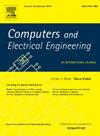Probabilistic modeling and optimization of microgrids with EV parking lots and dispersed generation
IF 4
3区 计算机科学
Q1 COMPUTER SCIENCE, HARDWARE & ARCHITECTURE
引用次数: 0
Abstract
Distributed generation sources provide self-governing power during outages, making microgrids and islanded distribution networks vital for service endurance, superior power quality, reliability, and operative efficiency. However, microgrids structure are difficult to control, particularly in islanded mode where no main power source exists if the main grid fails. Fast responses from discrete generation sources using power electronics can undermine the grid during faults or normal operations without proper regulations. The double-fed induction generator (DFIG) has become the preferred wind turbine generator owing to its low cost and flexibility to varying wind speeds. This paper presents a probabilistic scheduling for day-ahead microgrid programming that includes EV parking lots and dispersed generation resources. The microgrid works in both normal and islanded modes depending on main grid conditions. The uncertainty in EV parking lot usage is modeled hourly using the Z-number method, while wind and solar generation, market prices, and loads are modeled using the Monte Carlo method. Scenario-based incidents in the upstream grid that lead to microgrid islanding are considered, focusing on the time and duration of impact. The optimization model accounts for uncertainty, EV charging/discharging, and operational costs under normal and fault conditions. The fault ride-through (FRT) method for maintaining DFIG stability in islanded microgrids are proposed. In this technique stabilizes terminal voltage during faults by employing a resistor in series with the DFIG stator, enhancing voltage stability and FRT capability. Without these methods, the DFIG may lose stability after clearing transient errors, risking generator loss and threatening microgrid stability, particularly in islanded mode. The effectiveness of these control and protection strategies is validated through comprehensive simulations in MATLAB.
电动汽车停车场和分散式发电微电网的概率建模与优化
分布式发电在停电期间提供自我管理的电力,这使得微电网和孤岛式配电网络对服务的持久性、卓越的电能质量、可靠性和运行效率至关重要。然而,微电网结构难以控制,特别是在孤岛模式下,如果主电网发生故障,就不存在主电源。在故障或正常运行期间,如果没有适当的规定,使用电力电子设备的离散发电源的快速反应可能会破坏电网。双馈异步发电机(DFIG)因其低成本和适应不同风速的灵活性,已成为风力涡轮发电机的首选。本文介绍了一种用于日前微电网编程的概率调度方法,其中包括电动汽车停车场和分散的发电资源。根据主电网条件,微电网可在正常模式和孤岛模式下工作。电动汽车停车场使用情况的不确定性采用 Z 数法按小时建模,而风能和太阳能发电、市场价格和负荷则采用蒙特卡罗法建模。考虑了上游电网中导致微电网孤岛的情景事件,重点关注影响的时间和持续时间。优化模型考虑了不确定性、电动汽车充电/放电以及正常和故障条件下的运营成本。提出了故障穿越(FRT)方法,用于维持孤岛微电网中 DFIG 的稳定性。该技术通过采用与双馈变流器定子串联的电阻器来稳定故障期间的终端电压,从而提高电压稳定性和故障穿越能力。如果不采用这些方法,DFIG 可能会在清除瞬态误差后失去稳定性,从而导致发电机损耗并威胁微电网的稳定性,尤其是在孤岛模式下。这些控制和保护策略的有效性通过 MATLAB 的全面仿真得到了验证。
本文章由计算机程序翻译,如有差异,请以英文原文为准。
求助全文
约1分钟内获得全文
求助全文
来源期刊

Computers & Electrical Engineering
工程技术-工程:电子与电气
CiteScore
9.20
自引率
7.00%
发文量
661
审稿时长
47 days
期刊介绍:
The impact of computers has nowhere been more revolutionary than in electrical engineering. The design, analysis, and operation of electrical and electronic systems are now dominated by computers, a transformation that has been motivated by the natural ease of interface between computers and electrical systems, and the promise of spectacular improvements in speed and efficiency.
Published since 1973, Computers & Electrical Engineering provides rapid publication of topical research into the integration of computer technology and computational techniques with electrical and electronic systems. The journal publishes papers featuring novel implementations of computers and computational techniques in areas like signal and image processing, high-performance computing, parallel processing, and communications. Special attention will be paid to papers describing innovative architectures, algorithms, and software tools.
 求助内容:
求助内容: 应助结果提醒方式:
应助结果提醒方式:


